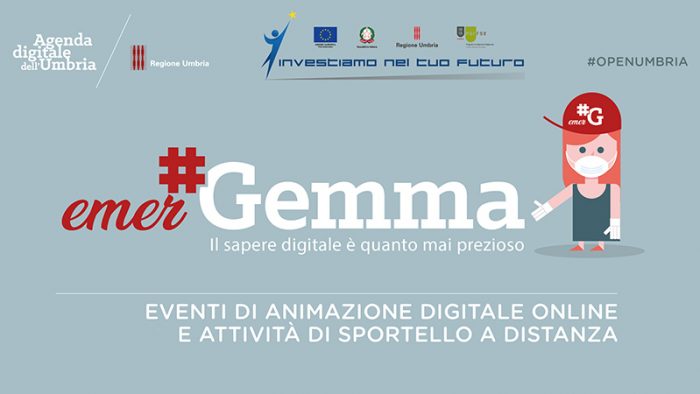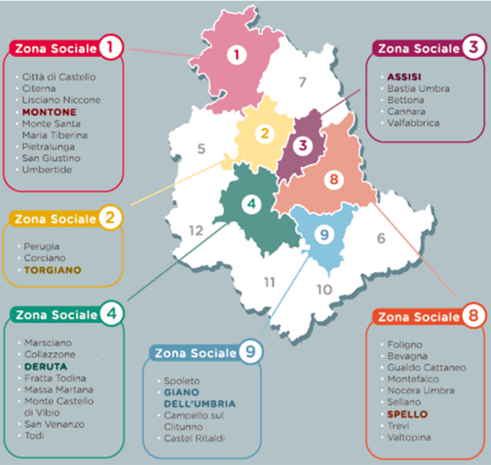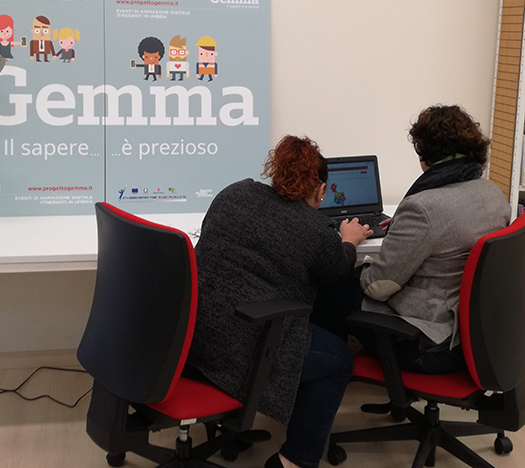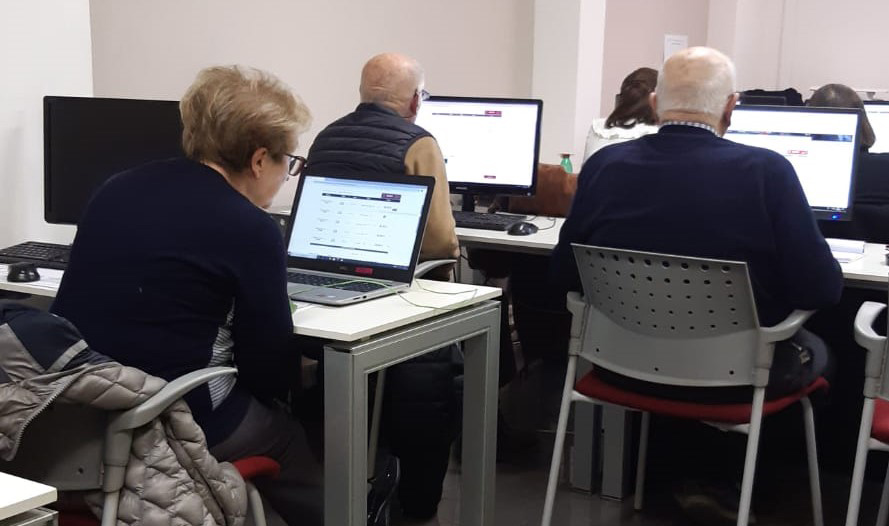What was the main purpose of the initiative?
“The #GEMMA project was driven by the aim of reducing the cultural and digital gap, as well as supporting the right to lifelong learning in the small Municipalities of Umbria”, says Project Manager Anna Schippa from Giove in Formatica srl, partner of the project. “By promoting the access for the citizens of all ages to free formal and informal learning opportunities, we wanted to strengthen inclusion in the digital society and improve people’s quality of life through digital means. The aim was also to foster the public administration digitalisation of regional programmes with reference to the Umbria Digital Agenda.
These goals, defined long before the outbreak of COVID-19 pandemic, became even more urgent as the lockdown period and health emergencies influenced people’s daily routine by intensifying social isolation and exclusion. Especially during that period, #GEMMA aimed to develop common digital skills and culture, by meeting citizens’ increasing digital needs.
Furthermore, the #GEMMA project focused on improving people’s well-being, helping them to recognise the positive value, as well as the risks, of digital resources. This mainly concerned two target groups, which are in many ways opposite to each other: On one hand, the elderly and their fear of specific information sources and means, and on the other hand, the children and teenagers, who need guidance in digital life more than ever before.”

How did the project foster digitalisation and democracy?
“The project was devised to operate in the territories that, due to their population or geography, are less exposed to digital inclusion. Therefore the people have a greater need for the development of digital skills required to exercise their rights and citizenship. The project aimed to “bridge the gaps” (physically and metaphorically) between small towns and rural areas and central government administrations, paying particular attention to the use of public utilities and e-government services.
The key words of the #GEMMA project strategy were “proximity”, “accessibility” and “engagement”. The main skills transfer method was non-directive oriented collective learning, with activities carried out in various informal locations (senior centres, youth centres, schools, and recreational clubs). This follows the principle that entertainment should reach the user, rather than vice versa, thus encouraging involvement of the people living far from the big urban centres.
The distance activities (Facebook live broadcasts, workshops on Zoom) allowed citizens to enjoy learning despite the measures imposed by the government. They also enabled support to people facing financial, health and traveling difficulties and allowed to promote the right to use public online services throughout a period of great social hardship.
The choice of the channels followed the principle of maximum democratisation. Workshops were held on Zoom, one of the most used video conferencing platforms during the first lockdown and live activities were held on YouTube (and Facebook) to allow participation without registering on any social media.”


What was the best practice learnt from this initiative that you want to share?
“Many best practices should be highlighted: The first is the engagement strategy for local bodies and associations in the project territories. The project involved more than 70 local bodies, voluntary associations, social promotion associations, citizens committees, schools and cultural organisations.
This was a remarkable achievement, backed by the Umbria Region’s public notice. It was strongly supported by the project group and the stakeholders who were called upon, according to their specific nature, to co-plan and promote the activities, host the meetings, and engage the citizens through their direct channels in order to meet the needs of the different territories and citizens. This effort should be acknowledged, since it happened during the most difficult stages of the healthcare crisis. When the COVID-19 emergency monopolised the agenda of the local administrations, it strongly affected local associations which were suddenly hindered by restrictions.
Another aspect to be highlighted refers to the methodological nature of the activities: Activities were made simple, based on single meetings, (although linked by a logical thread for priority target groups) held on different days and times, on a large schedule of more than 1440 hours of free entertainment. The participants had the chance to choose the meetings they wanted to take part in according to their specific needs, without being trapped in a structured and pre-set path. This was very appreciated, especially within the framework of the distance activities.”
Text: Sima Alia Ramos, EAEA & #GEMMA project
Photos: #GEMMA project

